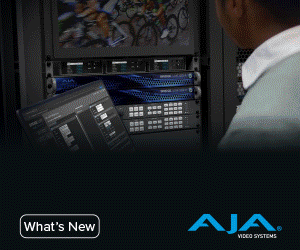In the ever-evolving world of audiovisual (AV) technology, staying ahead of the curve is essential for professionals and businesses alike. Artificial intelligence (AI) is a key player in this transformation, radically changing how AV systems are integrated and managed. AI’s ability to process and analyze vast amounts of data at lightning speed allows for smarter, more efficient AV integration. Imagine systems that can predict potential failures before they happen or automatically adjust settings for optimal performance. This is the power of AI in the AV industry: it not only enhances system reliability but also transforms user interactions, creating more intuitive and dynamic experiences.
Section 2: Automation Enhancing Efficiency and Reducing Costs
Automation is another critical component changing the landscape of AV integration. By automating routine tasks and processes, AV professionals can significantly increase efficiency and decrease operational costs. Automation can handle tasks such as system diagnostics, firmware updates, and even complex scheduling, freeing up valuable time and resources for more strategic activities. This reduction in manual intervention not only minimizes the risk of human error but also leads to faster, more consistent outcomes. For integrators and IT managers, embracing automation means keeping competitive in an industry where speed and accuracy are crucial.
Section 3: Seamless Operations in An Evolving Industry
As AV technologies become increasingly sophisticated, the integration processes must also evolve to ensure seamless operations. AI and automation play pivotal roles here, bridging the gap between complex AV systems and user-friendly experiences. These technologies facilitate interoperability among diverse components, creating streamlined solutions that are easier to manage and operate. For AV professionals, understanding how to effectively leverage these tools is key to maintaining smooth, uninterrupted operations. This not only enhances the user experience but also boosts the overall performance and scalability of AV systems across various environments.
Section 4: Strategies for Staying Ahead
The future of AV integration lies in the strategic use of AI and automation. To stay ahead, AV professionals must commit to continuous learning and adaptation. Engaging with cutting-edge training sessions, attending industry seminars, and keeping abreast of the latest technological trends are essential steps. Furthermore, collaborating with technology partners who prioritize innovation can provide critical support and insights. By adopting a proactive approach to continuous improvement and technological adoption, AV professionals can ensure they remain leaders in the ever-evolving AV landscape.
Conclusion
The integration of AI and automation into AV systems is not just a trend—it’s a necessity for those seeking to thrive in today’s dynamic industry. These technologies offer tangible benefits, from improved efficiency and cost savings to enhanced system reliability and user experiences. By embracing AI and automation, AV professionals can navigate the challenges of integration more effectively, positioning themselves and their organizations for future success. The key to harnessing these tools lies in proactive adaptation and learning, ensuring that the influential power of AI and automation is fully realized within the AV world.
- Transforming Workspaces: The Future of AV Integration - February 19, 2025
- Transforming Remote Work: How AV Technology is Paving the Way - February 18, 2025
- Revolutionizing AV Integration: Embrace the Cloud - February 17, 2025








